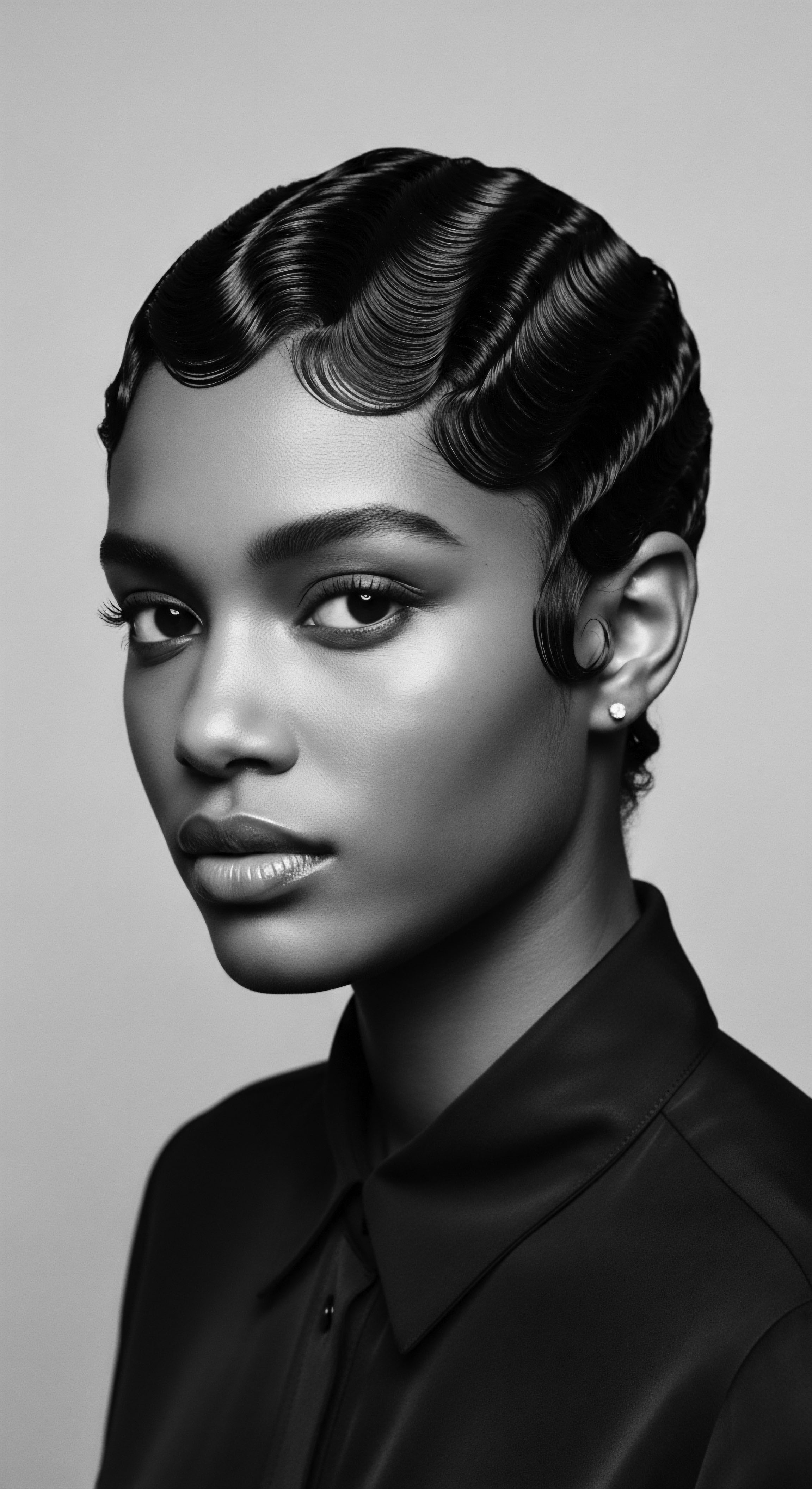
Fundamentals
The concept of Digital Beauty, at its foundational layer, describes the intersection where traditional aesthetics and our shared human experience of physical adornment meet the ever-expanding digital domain. This definition, though seemingly broad, narrows considerably when contemplating the textured hair, specifically the deeply rooted traditions and lived experiences within Black and mixed-race communities. Here, it signifies more than merely filters or virtual try-ons.
Instead, Digital Beauty becomes an expansive mirror, reflecting how technologies both portray and shape the visual representation and inherited practices tied to kinky, coily, and wavy hair. It concerns the digital rendering of hair, the online spaces fostering discourse around care, and the technological tools assisting in the preservation and modern interpretation of ancient styling techniques.
For generations whose stories are woven into the very strands upon their heads, this concept holds a particular resonance. It speaks to visibility, to the power of seeing oneself reflected in digital spaces in ways historically denied by mainstream media. The digital sphere thus grants a powerful forum for affirming the inherent appeal of diverse hair textures, moving beyond simplistic, often Eurocentric, beauty ideals.
It acts as a nexus, allowing ancestral knowledge regarding hair care rituals—passed down through oral tradition or through the quiet, patient teaching of hands—to find new avenues for dissemination and collective affirmation in the contemporary world. This fundamental understanding acknowledges the enduring influence of the past within the present digital landscape.
Digital Beauty, for textured hair, represents a powerful convergence of ancestral knowledge and modern technology, creating new avenues for cultural affirmation and shared heritage.
Historically, information about hair care, particularly for textured hair, was shared within intimate family circles or community gatherings. The digital turn has transformed this dynamic, creating vast, borderless communities where knowledge can be exchanged with unprecedented speed. This shift allows for a re-engagement with care practices that might have been fragmented by displacement or assimilation, facilitating a return to holistic approaches that consider hair as an integral part of one’s overall wellbeing. It is a profound exploration of how light, pixels, and algorithms can either uphold or challenge the deeply personal relationship individuals possess with their hair.

The Digital Echo of Ancient Rhythms
Consider the subtle ways the digital landscape mimics ancient patterns of communication and communal support. Just as communal hair braiding sessions once served as spaces for storytelling and shared wisdom, online forums and video platforms now fulfill a similar role, albeit on a global scale. In these digital hearths, individuals share their routines, recommend ancestral remedies, and offer encouragement, reinforcing a collective identity. The visual nature of digital platforms, in particular, lends itself to the detailed transmission of styling techniques and product applications, giving new life to methods that often eluded easy documentation in written form.
- Oral Tradition ❉ The digital realm allows for a contemporary continuation of the oral tradition, where visual and spoken instructions transmit complex hair styling and care techniques, much like elders teaching younger generations.
- Communal Gathering ❉ Online communities mirror historical gatherings, providing spaces for shared experiences, problem-solving, and emotional support regarding textured hair.
- Knowledge Preservation ❉ Digital archives, from personal blogs to large databases, aid in the preservation of diverse styling methods and care practices, many with ancient origins.
This initial glimpse into Digital Beauty reveals a field brimming with cultural significance. Its fundamental meaning extends far beyond mere surface aesthetics, delving into the very heart of identity, community, and the persistent spirit of ancestral practices in a technologically advanced era.
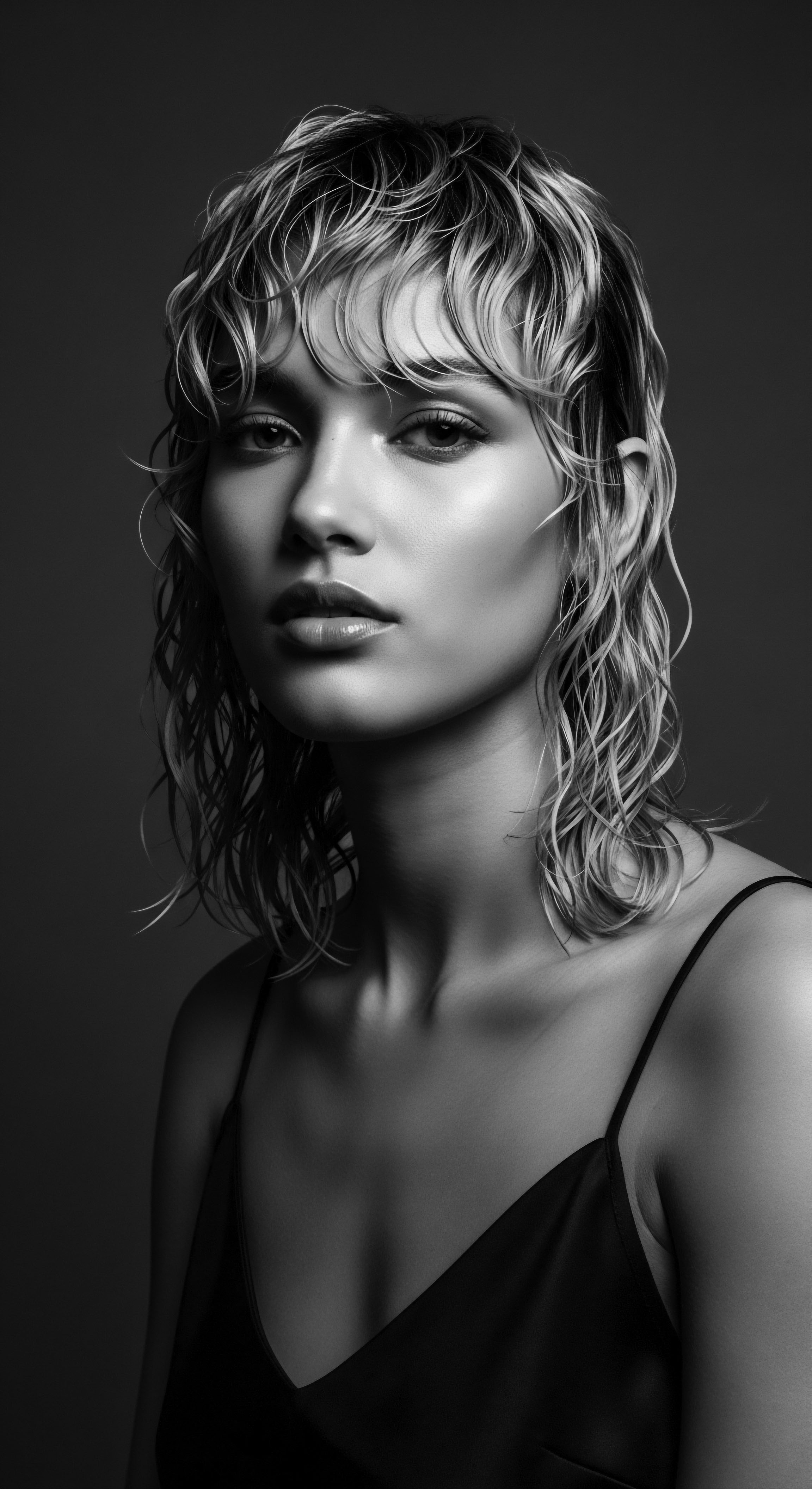
Intermediate
Moving beyond the foundational tenets, an intermediate understanding of Digital Beauty within the textured hair landscape begins to unravel its profound implications for self-perception, cultural preservation, and the reshaping of beauty ideals. Here, Digital Beauty is not merely about representation; it becomes an active agent in identity formation, providing tools and platforms that allow individuals to both assert and explore their hair heritage in dynamic ways. It concerns the evolving dialogue between historical contexts of hair as an identity marker and the new possibilities offered by digital expression.
This deeper analysis acknowledges that the digital environment, while offering unprecedented avenues for visibility, also presents its own set of challenges. The algorithms that govern social media feeds, for instance, can either amplify or diminish the presence of diverse hair textures, inadvertently perpetuating certain beauty standards or, conversely, empowering marginalized aesthetics. Digital Beauty, at this level, requires discernment ❉ understanding how digital tools are constructed, who benefits from their use, and how they influence the collective consciousness surrounding textured hair.
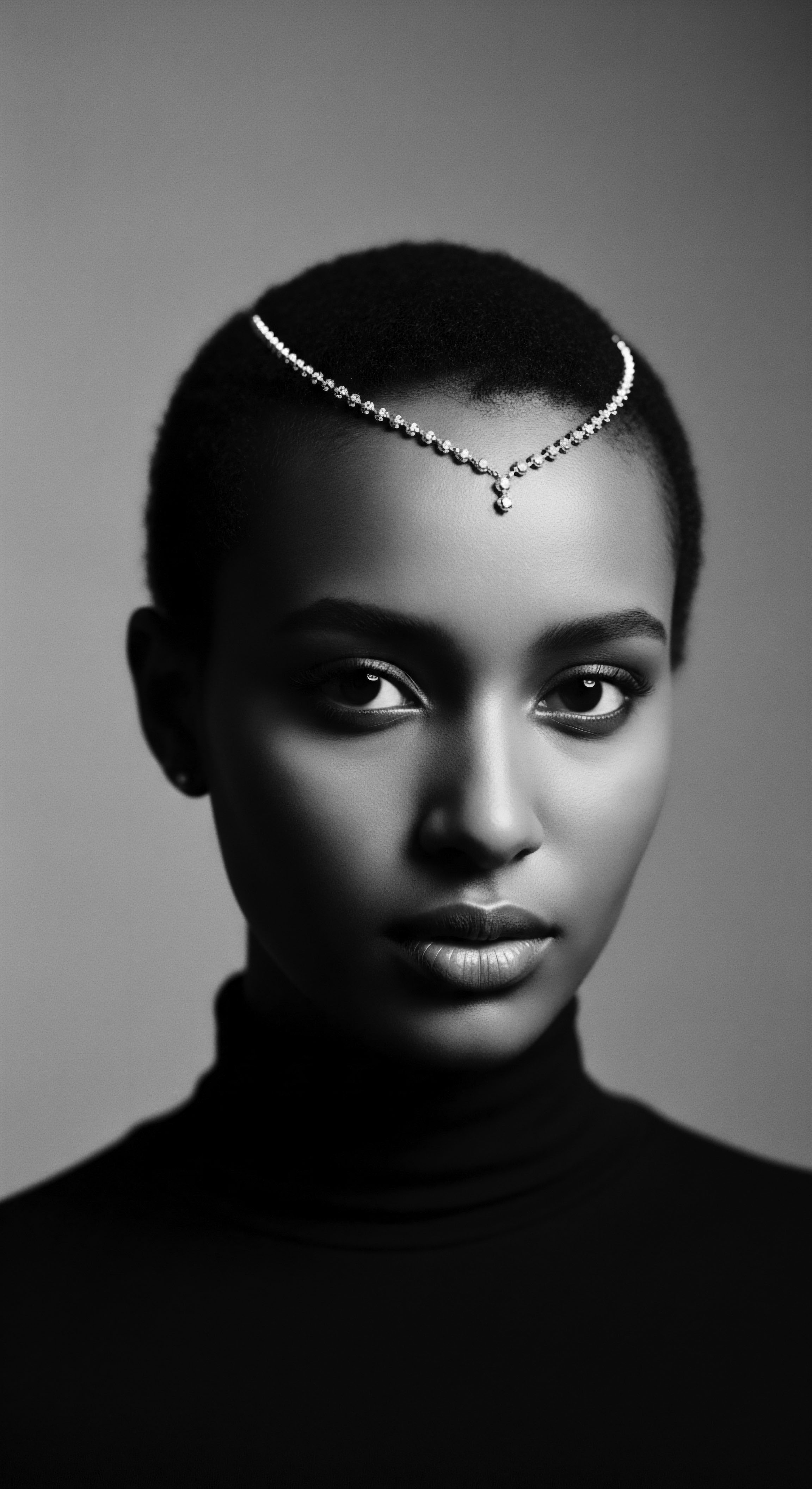
Redrawing the Contours of Identity Digitally
For centuries, Black and mixed-race individuals often faced societal pressures to conform to Eurocentric beauty standards, frequently necessitating the alteration of their natural hair texture. The advent of digital platforms has offered a powerful counter-narrative. Individuals now possess the means to define and celebrate their hair outside traditional media gatekeepers.
This involves sharing personal journeys of acceptance, showcasing the versatility of natural styles, and educating a global audience on the historical and cultural significance of various hair patterns and adornments. The digital space becomes a canvas where the heritage of hair, once suppressed, now thrives openly.
Consider the myriad ways cultural authenticity is expressed through digital hair content. From tutorials on intricate braiding patterns that echo West African traditions to discussions on the medicinal properties of ancestral oils used in hair care, the digital realm has revitalized these practices. This active sharing solidifies community bonds and reinforces the value of knowledge passed down through generations. The meaning of Digital Beauty, therefore, broadens to include this essential role in cultural continuity and resistance against historical erasure.
| Aspect of Hair Knowledge Skill Sharing |
| Ancestral Practice (Historical) Communal braiding circles, mother-daughter teaching, apprenticeships within extended family units. |
| Digital Manifestation (Contemporary) YouTube tutorials, Instagram live sessions, virtual braiding classes, online masterclasses. |
| Aspect of Hair Knowledge Product/Ingredient Knowledge |
| Ancestral Practice (Historical) Oral recipes for herbal rinses, oil blends, and natural conditioners passed down through generations. |
| Digital Manifestation (Contemporary) Blogs detailing ingredient benefits, online product reviews, digital formulations shared in forums, e-commerce of traditional ingredients. |
| Aspect of Hair Knowledge Cultural Significance |
| Ancestral Practice (Historical) Stories, folklore, and ritualistic explanations of hair's spiritual and social roles within community elders' narratives. |
| Digital Manifestation (Contemporary) Documentaries on digital platforms, academic articles shared online, community discussions exploring hair history and identity. |
| Aspect of Hair Knowledge Community Support |
| Ancestral Practice (Historical) Shared experiences of hair care challenges and triumphs during social gatherings and informal talks. |
| Digital Manifestation (Contemporary) Online support groups, social media challenges, virtual meet-ups for natural hair enthusiasts, direct messaging for peer advice. |
| Aspect of Hair Knowledge The digital era has amplified ancestral modes of knowledge transmission, making heritage accessible to a global audience. |

Navigating the Digital Aesthetic
The nuances of Digital Beauty extend to the very aesthetic of textured hair representation. This includes the emergence of specialized apps allowing for virtual try-ons of various styles suited for coily and kinky hair, or augmented reality filters that celebrate, rather than smooth over, natural texture. Such tools can serve as a playful avenue for experimentation, allowing individuals to visualize new looks rooted in their heritage without commitment. Moreover, they challenge the historical scarcity of diverse hair options in mainstream digital character creation and virtual avatars, finally offering a sense of authentic self-representation in simulated worlds.
An important consideration is the impact of these digital aesthetics on self-esteem. When textured hair is consistently rendered with care and celebrated in digital spaces, it reinforces a positive self-image for those who wear it naturally. This contrasts sharply with a past where media often depicted Black hair as unruly or undesirable, prompting a reliance on chemical straighteners.
Digital Beauty, therefore, operates as a tool for positive cultural reinforcement, strengthening the connection between individuals and their ancestral hair stories. It empowers individuals to reclaim and reinterpret their hair narratives on their own terms.
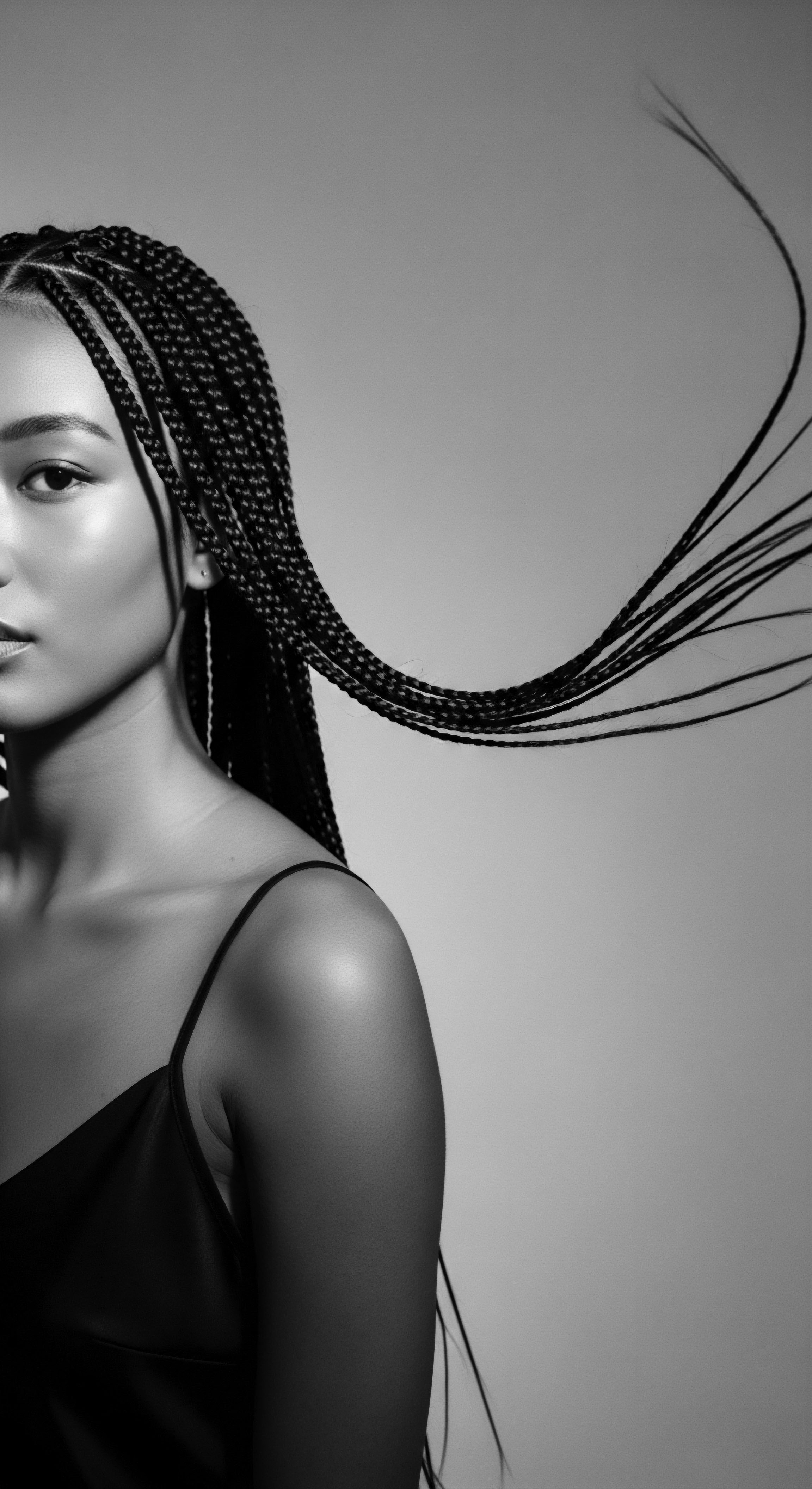
Academic
The academic definition of Digital Beauty, particularly within the framework of textured hair heritage, delineates a complex, multi-layered phenomenon where digital technologies intersect with, reflect, and actively shape the social, cultural, and political dimensions of aesthetic representation and identity, especially for individuals of African descent. It encompasses the intricate interplay between digital platforms, content creation, algorithmic influence, and the lived experiences of hair, offering both unprecedented opportunities for cultural affirmation and novel challenges to authenticity and self-perception. This scholarly interpretation considers Digital Beauty as a dynamic space where the historical narratives of textured hair meet the technological innovations of the contemporary era, forming a crucible for identity negotiation and communal solidarity.
This precise definition acknowledges that Digital Beauty transcends mere visual depiction. It involves the digitalization of ancestral hair knowledge systems, the creation of virtual communities centered on hair care, and the economic recalibration of the beauty industry through digital entrepreneurship. Academic scrutiny requires an examination of the power structures inherent in digital platforms, questioning how these technologies can either perpetuate or dismantle long-standing biases against textured hair. It demands an understanding of digital ethnography, media studies, cultural anthropology, and the sociology of appearance to fully grasp its significance.

Echoes from the Source ❉ Digitality and Ancestral Wisdom
The journey into Digital Beauty’s academic meaning begins with a deep appreciation for the enduring legacy of ancestral hair practices. Before the advent of screens and pixels, hair was a powerful medium for communication, status, spiritual belief, and ethnic identity across African cultures. Braiding patterns conveyed marital status, tribal affiliation, and even age, while oils and herbs served not only for cleansing but for protection and spiritual anointing.
The digital realm, in a fascinating historical turn, has become a contemporary extension of these practices. It permits the visual and instructional archiving of styles like the meticulously crafted Yoruba àdìrẹ patterns or the protective artistry of Fulani Braids, allowing them to traverse geographical boundaries and connect diasporic communities to their origins.
This digital preservation extends to the very philosophical underpinning of hair care. Ancient African civilizations viewed hair as a spiritual antenna, a conduit for communication with the divine. The communal grooming rituals, often performed by women, served as vital social bonds and repositories of collective wisdom.
In the digital age, discussion forums and social media groups dedicated to textured hair function as modern-day communal spaces, where individuals share not only styling tips but also emotional support and affirmations of self-worth. This perpetuates a form of digital oral tradition, allowing ancestral wisdom regarding holistic well-being—where hair health is intrinsically linked to mental and spiritual fortitude—to persist and find new expression.
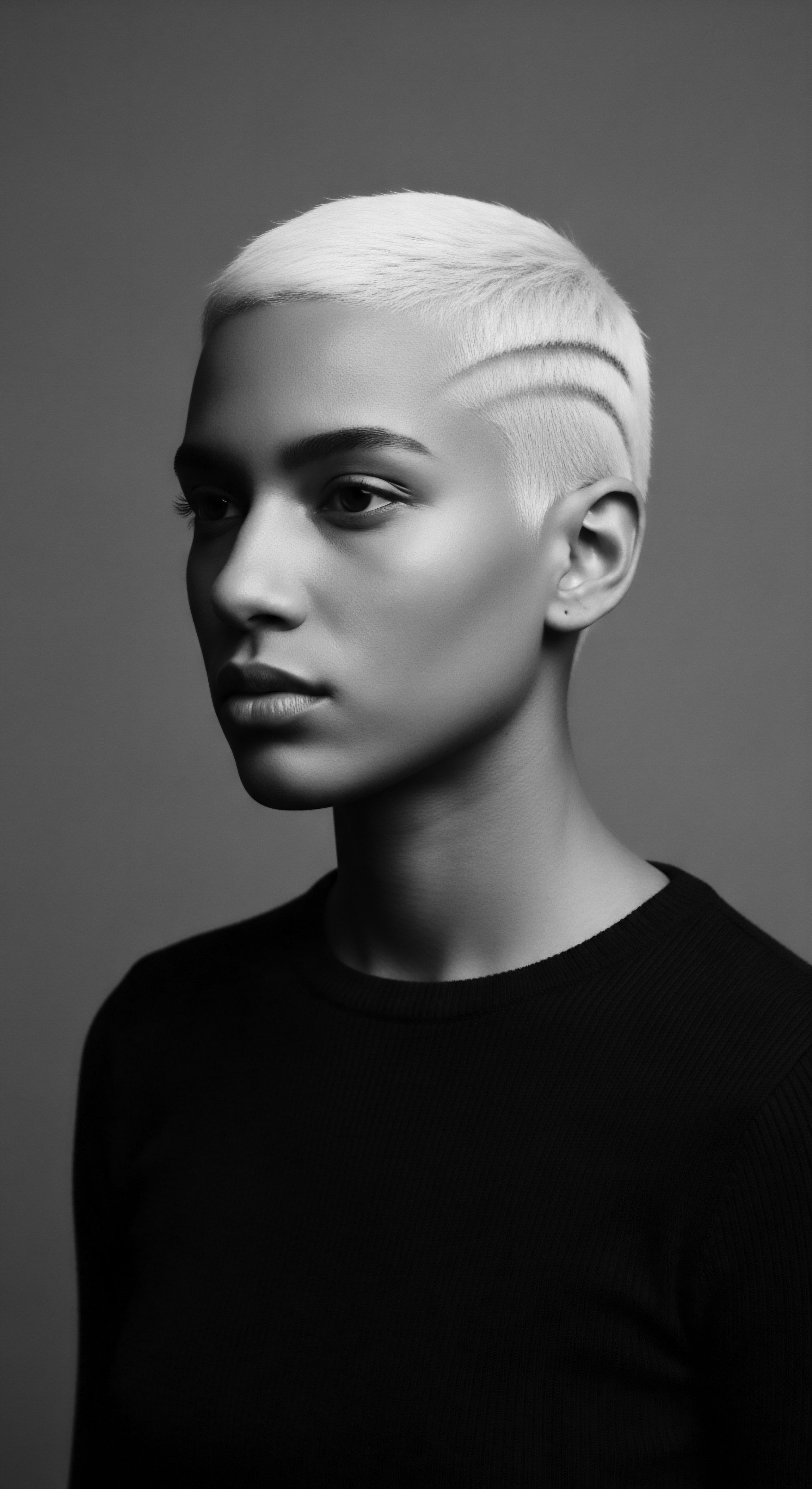
The Tender Thread ❉ Community, Identity, and Digital Affirmation
A central tenet of Digital Beauty within the textured hair context is its profound impact on community building and identity reclamation. For decades, Black women, particularly in Western societies, were subjected to dominant beauty standards that often denigrated natural hair, leading to widespread use of chemical relaxers and an internalization of unfavorable perceptions. The early 21st century witnessed a significant resurgence of the natural hair movement, a phenomenon inextricably linked to the burgeoning digital landscape.
Academic research, such as that by sociologists like Dr. Ebony McGee on racial identity and appearance, highlights how online platforms became crucial sites for challenging prevailing beauty norms.
The digital landscape serves as a vital contemporary site for textured hair communities to assert identity, share ancestral knowledge, and collectively redefine beauty standards previously imposed.
A potent case study illustrating this phenomenon is the role of early video-sharing platforms, specifically YouTube, in democratizing natural hair education and fostering a global sense of solidarity. Prior to the late 2000s, accessible, diverse resources for caring for natural Black hair were scarce outside of niche community networks. The mainstream media offered minimal representation and often promoted styles requiring chemical alteration. As documented by researchers examining digital cultural production, YouTube became an unexpected, powerful repository of experiential knowledge.
Individuals, predominantly Black women, began uploading raw, unscripted tutorials on washing, conditioning, styling, and maintaining their natural hair. This created a new form of digital ethnography, providing authentic visual and narrative accounts of Black hair experiences previously unrecorded or marginalized in dominant cultural archives. For instance, the channels of early natural hair pioneers like Naptural85 or NaturallyCurly (though the latter was a website, its community forum and user-generated content mirrored this digital communal sharing) provided tangible, relatable examples and advice, creating a sense of collective learning and mutual encouragement.
This digital revolution facilitated a profound shift ❉ it allowed for the direct, unfiltered transmission of ancestral and newly discovered hair care knowledge. The impact of these digital communities extended beyond practical advice. They became spaces for psychological liberation, fostering a sense of pride and validation for hair textures historically deemed “unprofessional” or “unattractive.” The digital sphere thus acted as a powerful counter-archive, collecting and disseminating narratives and images that celebrated the diversity and intrinsic beauty of textured hair, directly confronting the monolithic beauty ideals propagated by traditional media.

The Unbound Helix ❉ Shaping Futures and Challenging Algorithms
The academic purview of Digital Beauty also extends into its capacity to shape future interactions with hair and to challenge the inherent biases within algorithmic structures. As digital representations of beauty grow more sophisticated, from virtual reality avatars with hyper-realistic hair textures to artificial intelligence-powered diagnostic tools for scalp health, the imperative to ensure these technologies are inclusive and culturally informed becomes paramount. The historical context of hair discrimination, from the Jim Crow Era’s “bad Hair” Clauses to contemporary workplace biases, underscores the urgency of this digital ethical consideration.
For instance, the development of algorithms for facial recognition or virtual hairstyling often originates from datasets predominantly featuring straight or wavy hair. This can lead to algorithmic bias, where textured hair is either misidentified, poorly rendered, or simply not offered as an option. Academic discourse in areas like critical algorithm studies therefore examines how Digital Beauty can either replicate or disrupt these systemic inequities. A critical approach emphasizes the need for diverse teams in tech development, culturally responsive data collection, and the intentional programming of inclusivity into digital beauty applications.
Furthermore, Digital Beauty is a significant force in the economic empowerment of communities. Online marketplaces and social media platforms have provided unprecedented avenues for independent Black-owned beauty brands specializing in textured hair products to reach a global audience. This has democratized access to the market, allowing entrepreneurs to bypass traditional retail gatekeepers and connect directly with consumers seeking products specifically formulated for their hair needs. This phenomenon is a continuation of historical traditions of self-sufficiency and communal economic support within Black communities.
- Digital Archiving ❉ Technologies enable the systematic collection and preservation of diverse hair practices, traditional tools, and historical styling techniques, preventing loss of invaluable cultural information.
- Algorithmic Justice ❉ Scholars examine how digital platforms can be designed to counteract historical biases in beauty standards, ensuring equitable representation and functionality for all hair textures.
- Economic Democratization ❉ Digital commerce platforms provide independent textured hair brands with global reach, fostering self-reliance and community wealth in ways previously unattainable through traditional retail channels.
The academic exploration of Digital Beauty, therefore, is not a detached intellectual exercise. It is a vital inquiry into how our increasingly digitized world interacts with the profound cultural heritage of textured hair. It seeks to understand how meaning is constructed, how power is exerted, and how communities leverage technology to affirm, celebrate, and preserve their unique hair narratives for generations to come. The goal is to ensure that the future of beauty, as shaped by digital innovation, remains deeply respectful of its historical roots and serves as a true mirror for the entire spectrum of human experience.
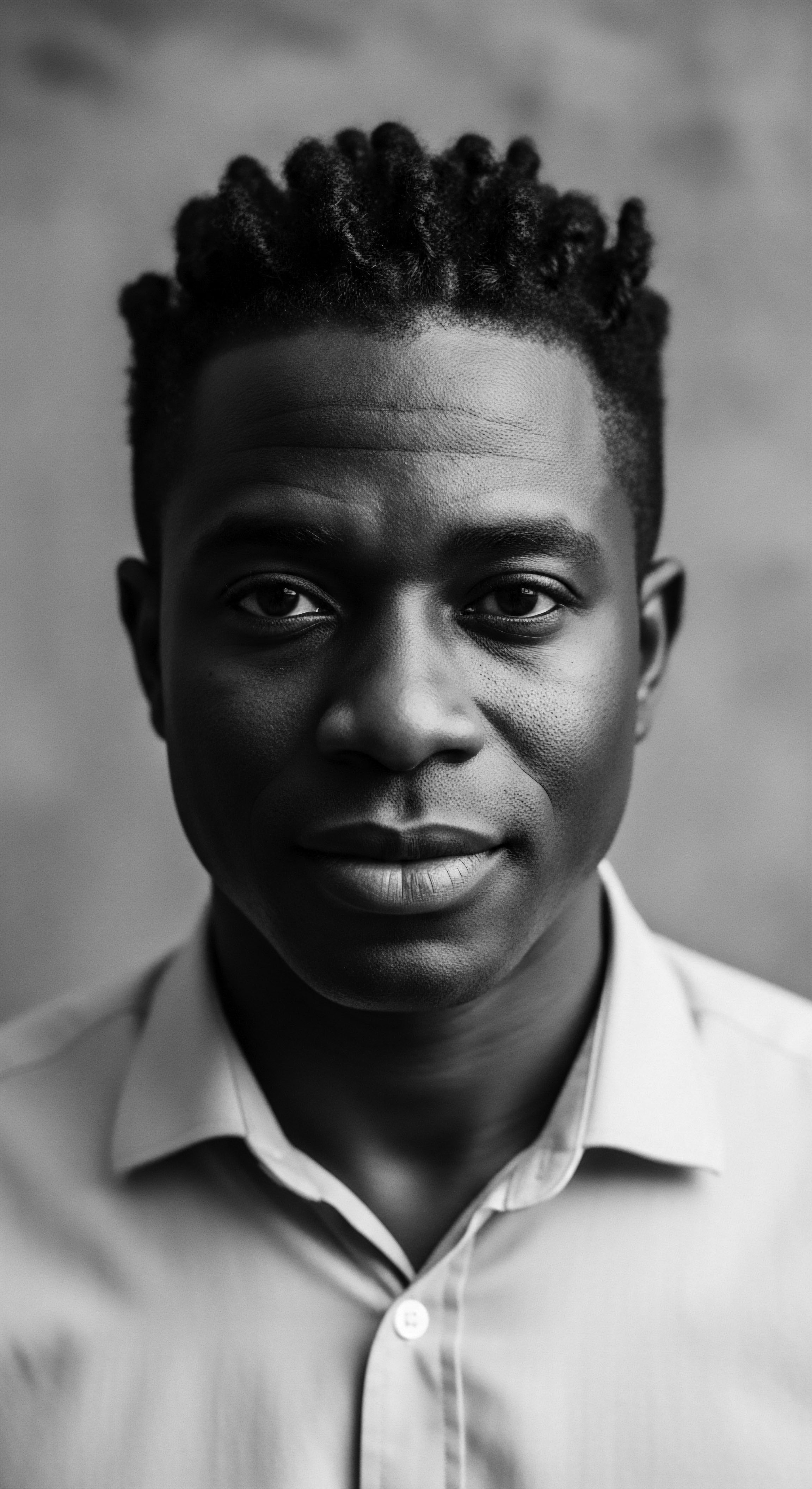
Reflection on the Heritage of Digital Beauty
The exploration of Digital Beauty, particularly through the lens of textured hair heritage, reveals a compelling continuum. It demonstrates how the spirit of ancestral wisdom, ever resilient, finds new vessels in the contemporary digital realm. The quiet strength of communal hair care rituals, once confined to hearth and home, now echoes across global networks, connecting diasporic kin in shared discovery. This journey, from elemental biology to the unbound helix of digital expression, illustrates a profound truth ❉ the hair, in its myriad forms, remains a powerful conduit for identity, memory, and a collective future.
Contemplating the enduring significance of Digital Beauty in this context prompts a deeper consideration of our relationship with both technology and tradition. It calls upon us to recognize the potential of digital tools not merely for fleeting aesthetic trends, but as instruments for preserving cultural legacies, fostering genuine connection, and challenging historical narratives that sought to diminish the intrinsic appeal of Black and mixed-race hair. The digital space, in its highest form, becomes a living archive, breathing with stories, knowledge, and an unwavering celebration of heritage. It is a testament to the fact that beauty, in its most authentic form, transcends the superficial, finding its true reflection in the continuous unfolding of history and the enduring power of community.
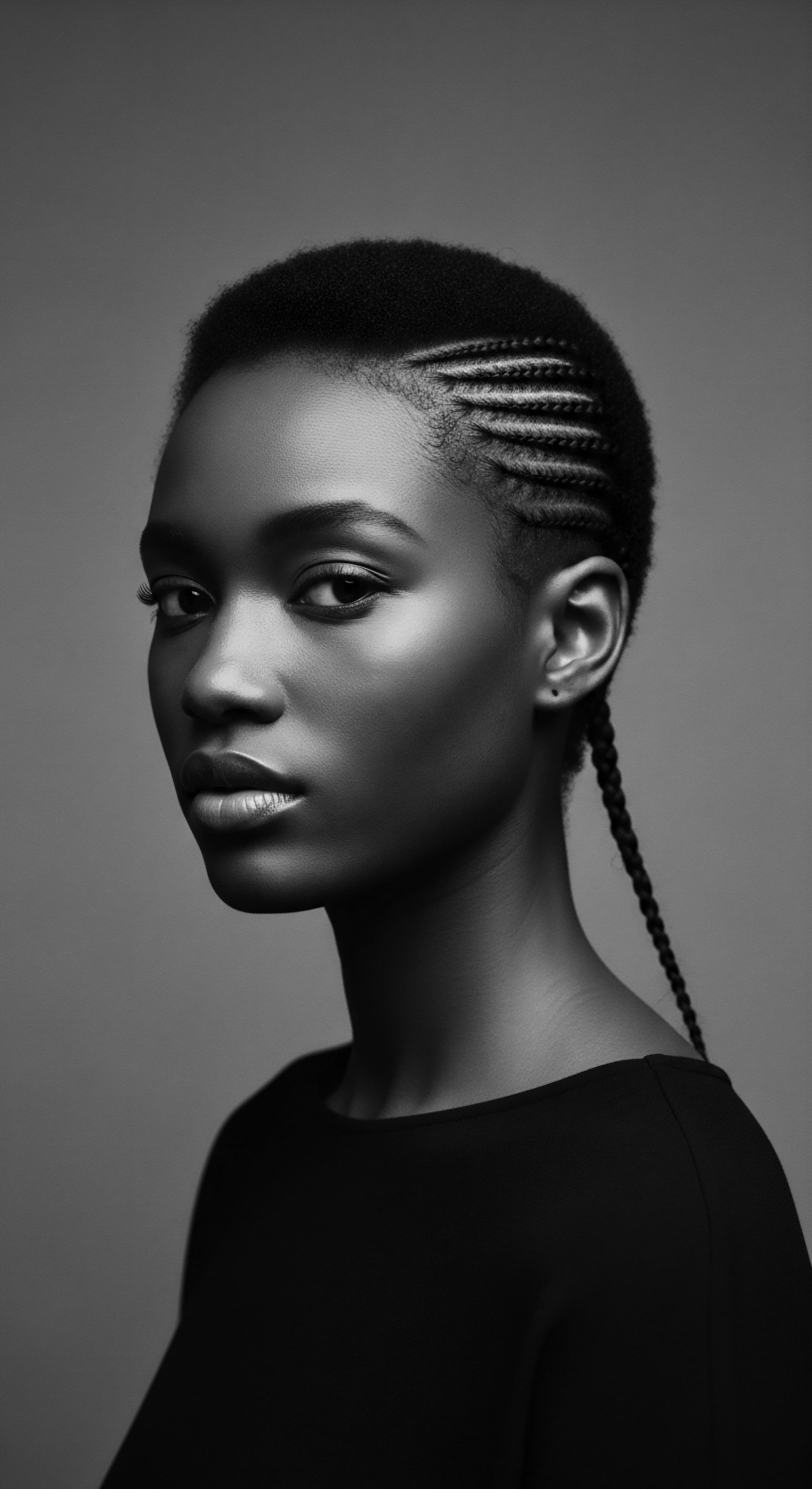
References
- Byrd, A. & Tharps, L. (2001). Hair Story ❉ Untangling the Roots of Black Hair in America. St. Martin’s Press.
- Mercer, K. (1994). Welcome to the Jungle ❉ New Positions in Black Cultural Studies. Routledge.
- Hooks, b. (1992). Black Looks ❉ Race and Representation. South End Press.
- Patton, M. F. (2006). African-American Hair as a Cultural Expression ❉ An Analysis of the Natural Hair Movement. University of Maryland.
- Kelley, B. P. (2018). Black Skin, White Masks ❉ An Online Ethnography of the Natural Hair Movement. Temple University Press.
- Banks, P. (2011). Hair Matters ❉ Beauty, Power, and Black Women’s Consciousness. New York University Press.
- Boylorn, R. M. (2013). Sweetwater ❉ Black Women and Narratives of Resilience. Peter Lang.
- Thompson, C. (2008). Hair in African Art and Culture. The Museum for African Art.
- White, E. C. (1995). The Hair-Do Handbook ❉ A Guide to African American Hair Care. Simon & Schuster.
